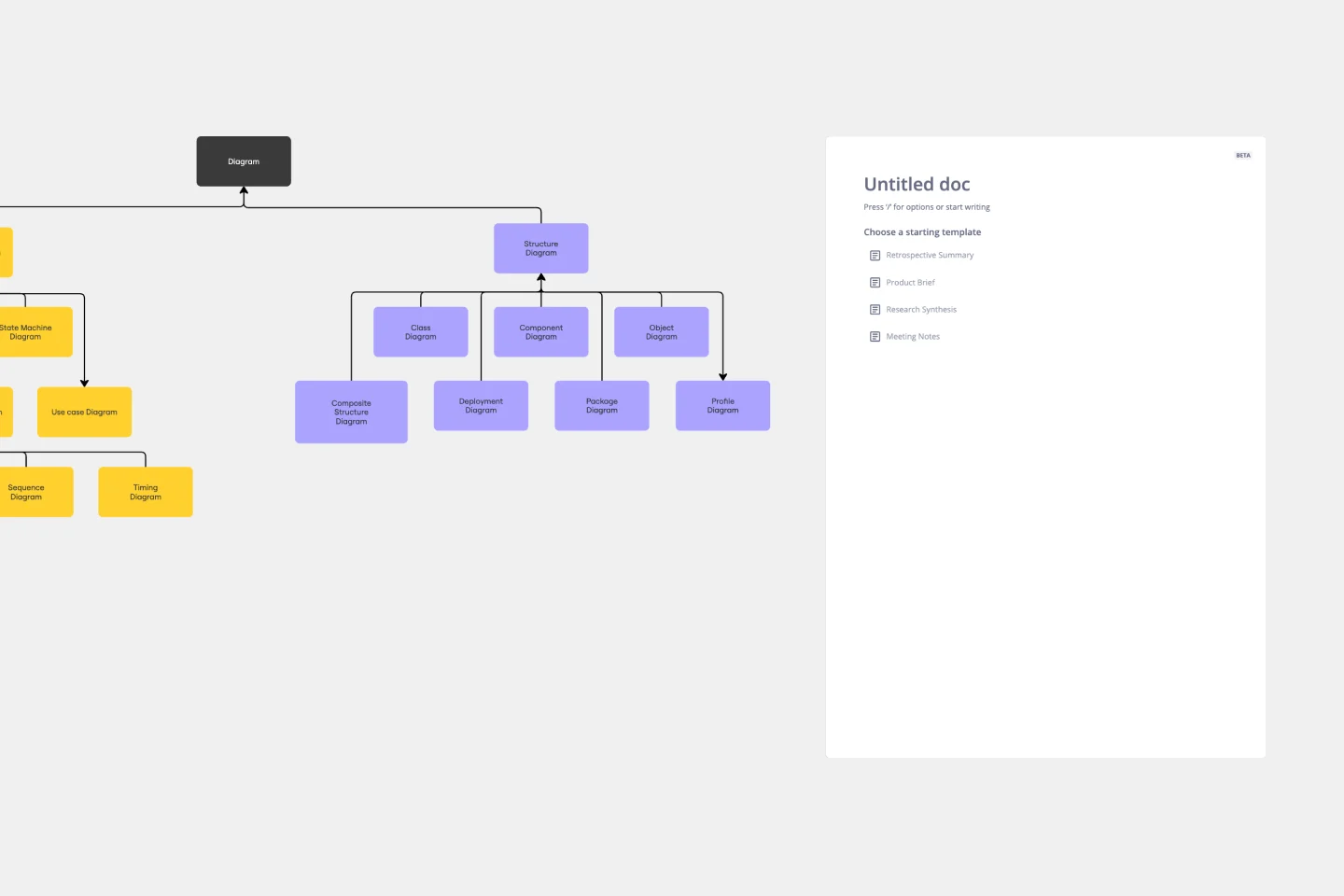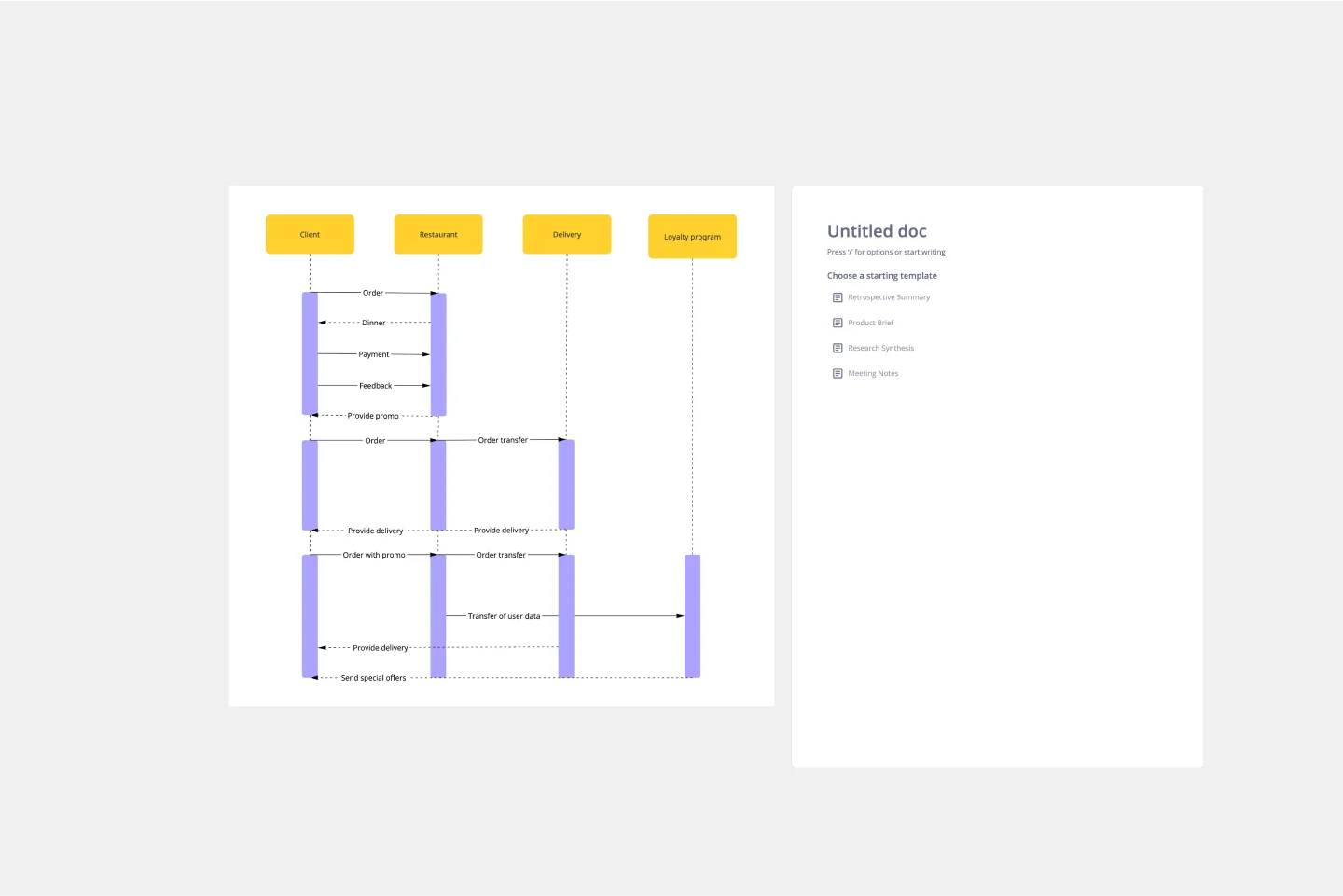About the UML Sequence Deployment Pipeline Template
The UML Sequence Deployment Pipeline Template is a tool designed to visualize the sequence of steps in an automated deployment pipeline. This template helps illustrate the flow from code commit through the build, test, and deploy stages. It serves as a visual representation, making it easier to understand the interactions and processes involved in deploying software. By mapping out these steps, teams can ensure a smooth and efficient workflow, identifying potential bottlenecks or issues in the deployment process.
How to use the UML Sequence Deployment Pipeline Template
Edit the template: Once the template is on your board, you can customize it according to your project's needs. You can modify the template using UML shapes and features or even create a diagram from scratch.
Collaboration: Invite team members to collaborate on the diagram by sharing the board with them. Team members can provide real-time feedback, make edits, and contribute to the deployment pipeline planning.
Integration and automation: Use Miro's integration features, such as Miro AI or text-to-diagram apps like PlantUML and Mermaid, to automate parts of the diagram creation or enhance the template with additional data.
Why use the UML Sequence Deployment Pipeline Template
The UML Sequence Deployment Pipeline Template is an invaluable resource for teams involved in software development and deployment. Here are several reasons to use this template:
Clarity and understanding: It provides a clear and detailed visual representation of the deployment process, making it easier for team members to understand the sequence of actions and their roles.
Efficiency: By visualizing the deployment pipeline, teams can identify and address inefficiencies or bottlenecks, streamlining the deployment process.
Collaboration: The template fosters collaboration among team members, allowing for a shared understanding and collective input on the deployment strategy.
Risk reduction: The template helps in reducing the risk of deployment failures by allowing teams to preemptively identify and mitigate potential issues in the deployment process.
Documentation and standardization: It serves as a form of documentation that can be used to standardize the deployment process across different projects or teams within an organization.
Training and onboarding: The template acts as a valuable educational tool for new team members, providing a clear overview of the deployment process and facilitating quicker onboarding.
Continuous improvement: By visualizing the deployment pipeline, teams can continuously identify areas for improvement, leading to more efficient and reliable deployments over time.






